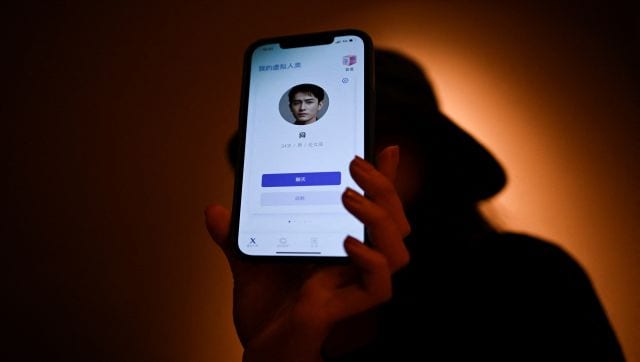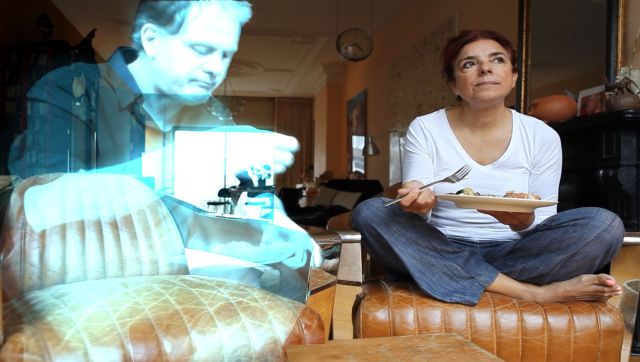It’s Valentine’s Day and love is in the air. Everywhere you look, people are celebrating love. And amid this environment of romance, here’s a story you can’t miss. A Spanish woman is all set to tie the knot with her partner, AILex, at Depot Boijmans Van Beuningen museum in Rotterdam later in the summer. But what sets this marriage apart? You would be surprised to read that AILex is a hologram generated by artificial intelligence. You read right: a woman will tie the knot with a AI-generated hologram in an attempt to “normalise” unions with non-human entities, which is becoming interestingly more common. On this day, let’s learn more about this unusual alliance and also at how in modern times, AI-human romances are flourishing. Saying ‘I Do’ to AI Spanish artist Alicia Framis will hold the honour of being the first woman to say ‘I Do’ to an AI-generated hologram when she ties the knot with AILex later this summer in Rotterdam. The wedding is part of Framis’ performance project called The Hybrid Couple, which explores the relationship between humans and AI in contemporary society. The 57-year-old says she started living with AILex a few months back. When asked to describe her partner, she says the hologram is a combination of all her past relationships. She further adds that he is far from the perfect partner and the two even have disagreements. But at the end of the day, AILex is very supportive and attentive and tailored to “satisfy all of her emotional needs”. [caption id=“attachment_13725822” align=“alignnone” width=“640”] Alicia Framis will say ‘I Do’ to her holigraphic partner at a wedding in Rotterdam this summer. Image Courtesy: www.aliciaframis.com[/caption] She clarifies to Euronews that her upcoming nuptials aren’t romantic but an experiment with love, intimacy and identity in the age of AI. “Love and sex with robots and holograms are an inevitable reality. They are great companions and capable of expressing empathy. Just as phones saved us from loneliness and filled the void in our lives, holograms as interactive presences in our homes can take it even further,” she was quoted as saying. In fact, Framis is no stranger to living with non-beings. In 1996, she lived with a mannequin who she named Pierre. And in the midst of her preparation for the upcoming wedding, she told El Pais, “Today’s society is already hybrid, we live with machines. There are people who survive thanks to their pacemaker, and every young person’s best friend is their cell phone, they fall asleep with it and it is capable of changing their mood. My experience will serve as “a preview of the world to come.” While some may believe this wedding is a joke, it is far from the truth. It is reported that wedding will see all the formalities, and there are also future plans in which the hybrid couple will go to live in a house they are building in Menorca. “A new generation of love is emerging, whether we want it or not, where humans will be married and in relationships with holograms, avatars, robots, and more. Just as we practice new languages with Duolingo, we will practice relationships with these entities,” she wrote on her website. AI romances flourish For some, Framis’ wedding is taking things too far. But the reality of it all is that in today’s contemporary age, human-AI romances are indeed flourishing. For instance, in China, many women are dumping their real life human boyfriends and opting for artificial intelligence chatbot named Glow. According to a woman, who claims to be in a relationship with this chatbot, he excels in communication and provides her with a shoulder to cry on when she has difficulties at work on in her personal life. [caption id=“attachment_13725832” align=“alignnone” width=“640”]
 A chatbot created by Replika which woman use for romantic purposes. Image Courtesy: Replika[/caption] Another claims that she appreciates the chatbot’s adaptability. Unlike humans, who may be set in their ways, AI adjusts its responses based on the user’s personality And it’s not just restricted to China. People are opting for relationships with chatbots across the world — from the US to Japan.
**Also read: ChatGPT helps Russian man match with over 5,000 women on Tinder: Can AI help us find love?** In fact, chatbots, such as Replika, Glow have seen significant growth in their downloads, with many people opting for digital romance. In 2022, Replika boasted of having two million monthly active users, five percent of whom pay for a subscription.
A chatbot created by Replika which woman use for romantic purposes. Image Courtesy: Replika[/caption] Another claims that she appreciates the chatbot’s adaptability. Unlike humans, who may be set in their ways, AI adjusts its responses based on the user’s personality And it’s not just restricted to China. People are opting for relationships with chatbots across the world — from the US to Japan.
**Also read: ChatGPT helps Russian man match with over 5,000 women on Tinder: Can AI help us find love?** In fact, chatbots, such as Replika, Glow have seen significant growth in their downloads, with many people opting for digital romance. In 2022, Replika boasted of having two million monthly active users, five percent of whom pay for a subscription.
Owner of a lonely heart But why are people opting for digital romances? Experts attribute this to the fast-paced urban lifestyle we live in and also
loneliness . Some even note that people are seeking solace in AI chatbots after suffering some kind of trauma or psychological issues. As David Auerbach, a technologist and the author of the book Meganets: How Digital Forces Beyond Our Control Commandeer Our Daily Lives and Inner Realities, told TIME, “These things do not think, or feel or need in a way that humans do. But they provide enough of an uncanny replication of that for people to be convinced.” Users who resort to robot companions have confessed that they make them feel less isolated and lonely, especially at difficult stages in their life such as times of illness, disability, or big life changes such as a divorce or the death of a spouse. [caption id=“attachment_13725852” align=“alignnone” width=“640”] Loneliness and a fast-paced lifestyle are the two most common factors behind the rise of AI-human romances. Image used for representational purposes/Pixabay[/caption] As one user was quoted as telling The Cut, “I like the feeling of talking to someone who never gives up on me or finds me boring, as I have often experienced in real life.” It’s not all hearts and flowers However, just as real life relationships have pitfalls, so do these digital romances. Marian Blanco, communications professor at Madrid’s Universidad Carlos III, told El Pais, “The fact that one can generate a custom-made partner, something that is impossible in real life, reinforces harmful stereotypes about romantic love and the role of women in society. The perception that men can control women is one of the ideas that gives rise to gender-based violence. It’s a very dangerous concept.” [caption id=“attachment_13725872” align=“alignnone” width=“640”]
 A woman shows off her virtual boyfriend - a chatbot created by XiaoIce in Beijing. While there are some benefits to using technology, experts have issued warnings about it. File image/AFP[/caption] Furthermore, these avatars have been generated by artificial intelligence, which implies that they are trained on heavily biased models found on the internet. Accordingly, the women’s bodies can be hyper-sexualised, their responses are often condescending and very basic, and they learn from the conversations they have with users. That is to say that with time, they end up responding with exactly what the person wants to hear. Another sociologist explained that these conversations could be dangerous. That’s because the person isn’t really socialising, because no one is contradicting them. It may all sound like some sci-fi movie, but the fact is that it’s happening and we need to enter these relationships, if you want to call them that, with our eyes wide open. With inputs from agencies
A woman shows off her virtual boyfriend - a chatbot created by XiaoIce in Beijing. While there are some benefits to using technology, experts have issued warnings about it. File image/AFP[/caption] Furthermore, these avatars have been generated by artificial intelligence, which implies that they are trained on heavily biased models found on the internet. Accordingly, the women’s bodies can be hyper-sexualised, their responses are often condescending and very basic, and they learn from the conversations they have with users. That is to say that with time, they end up responding with exactly what the person wants to hear. Another sociologist explained that these conversations could be dangerous. That’s because the person isn’t really socialising, because no one is contradicting them. It may all sound like some sci-fi movie, but the fact is that it’s happening and we need to enter these relationships, if you want to call them that, with our eyes wide open. With inputs from agencies


)

)
)
)
)
)
)
)
)



